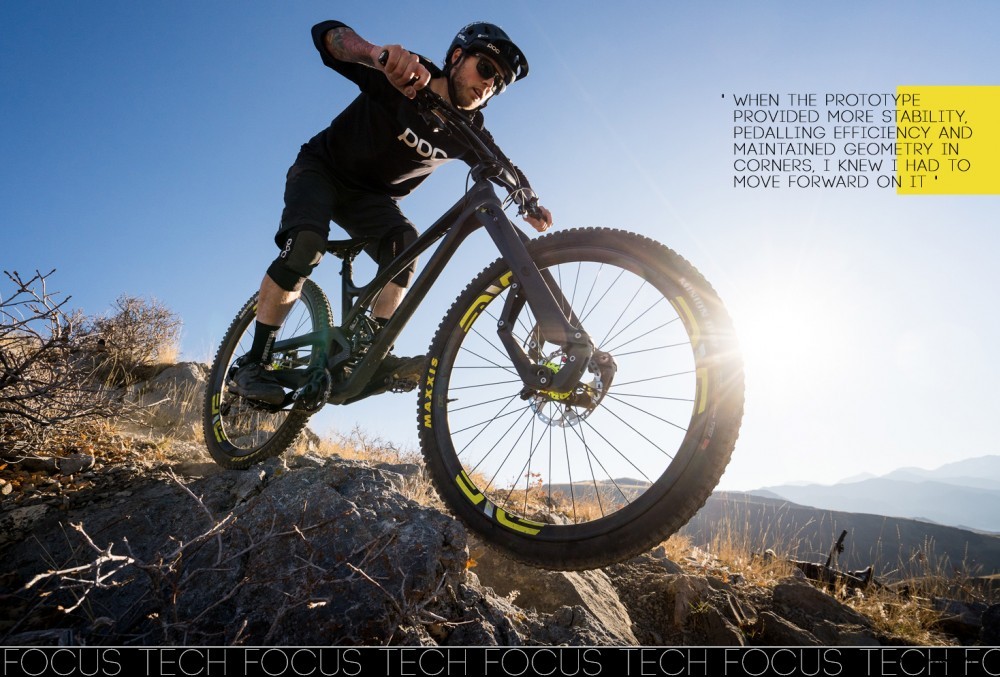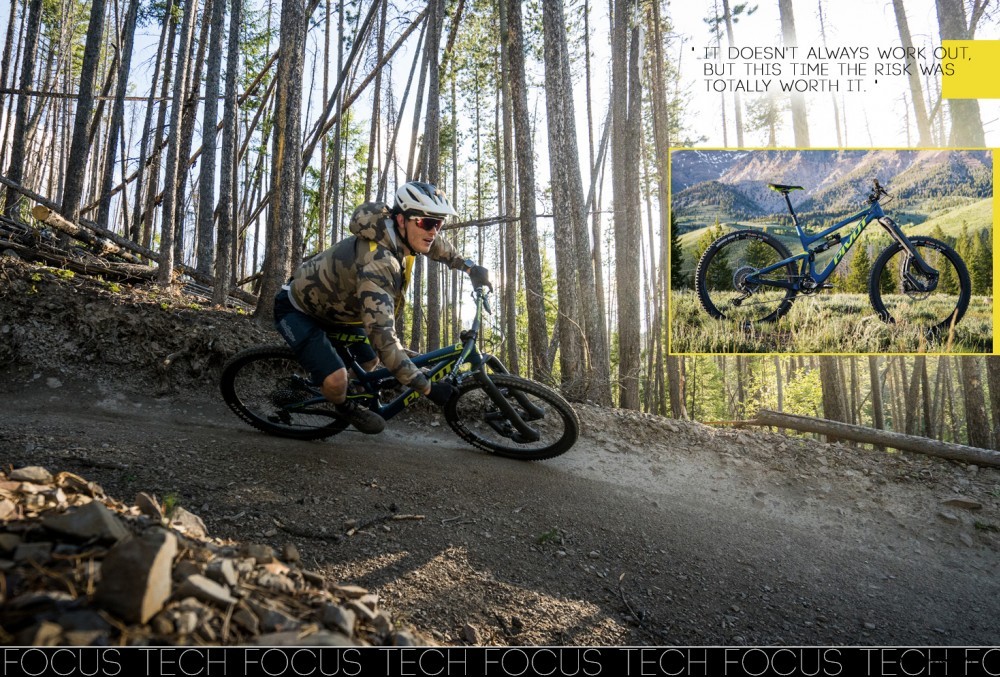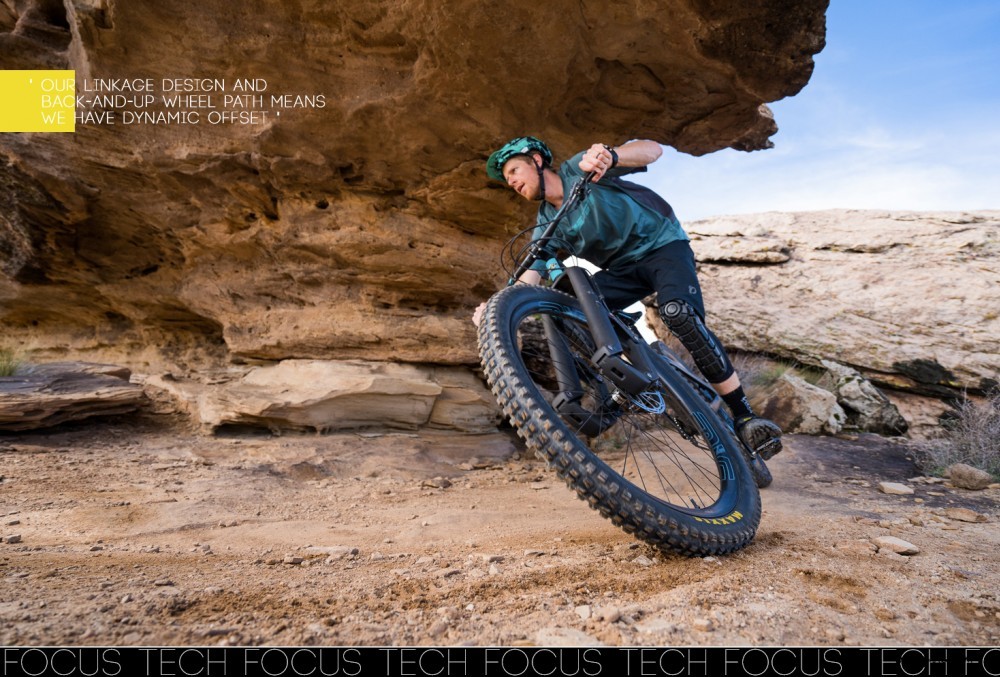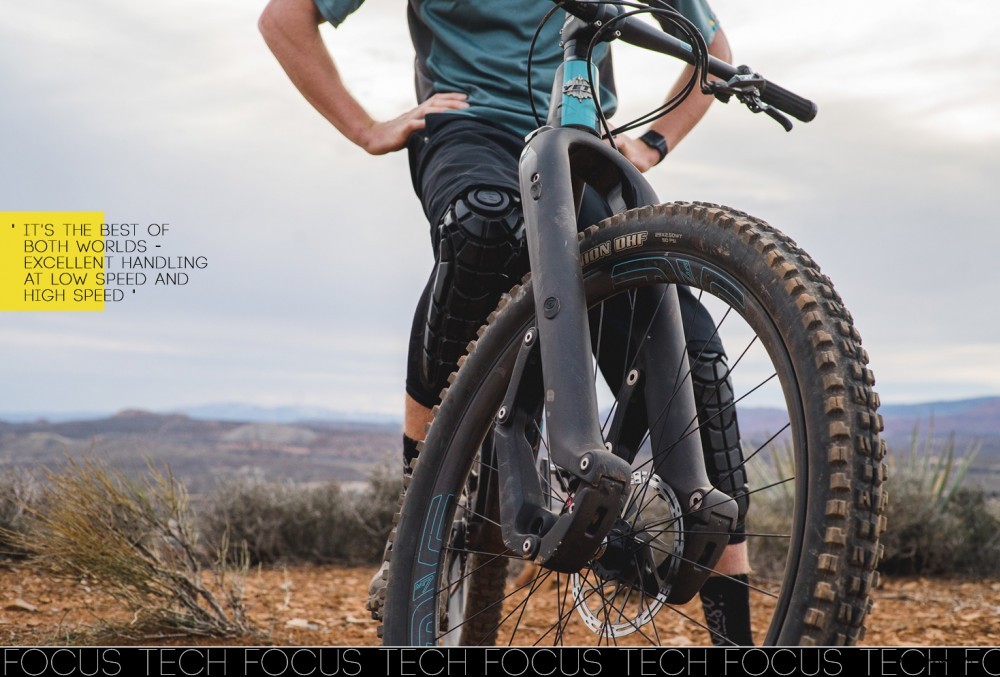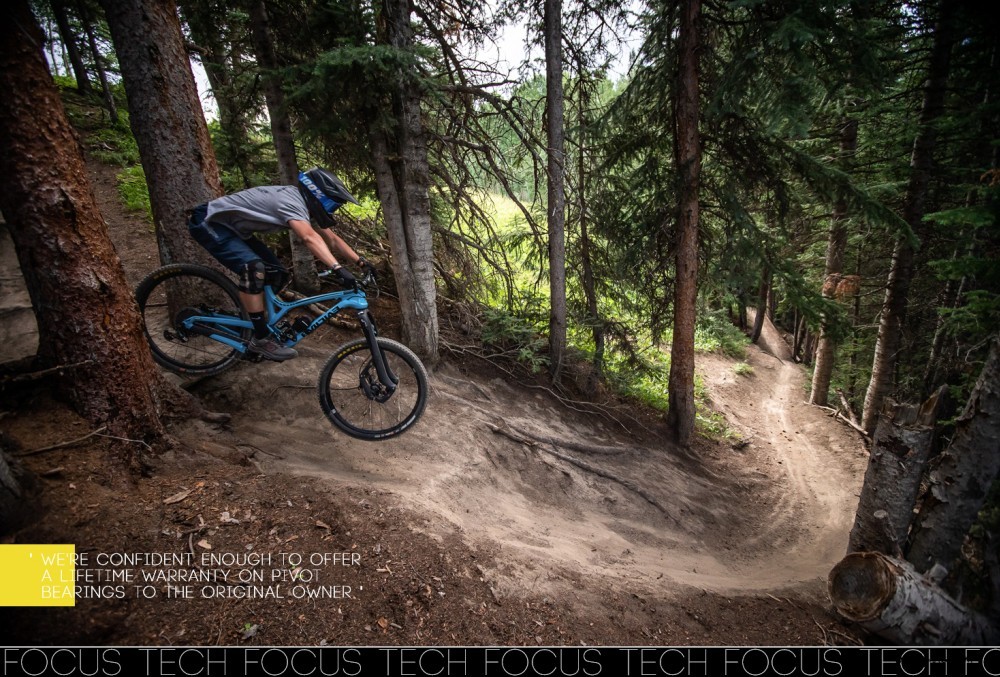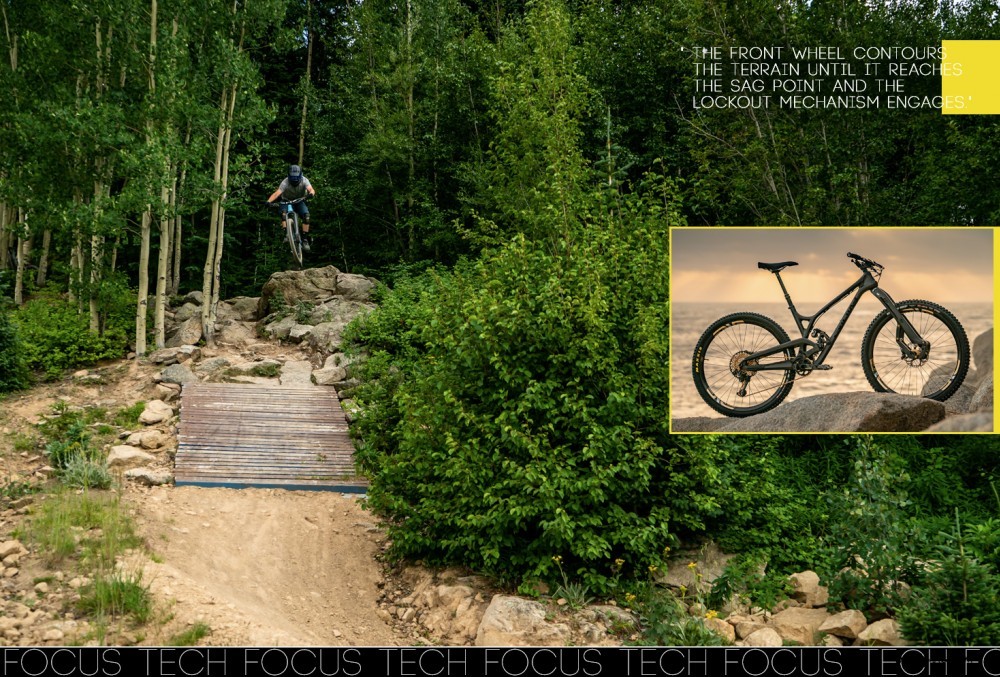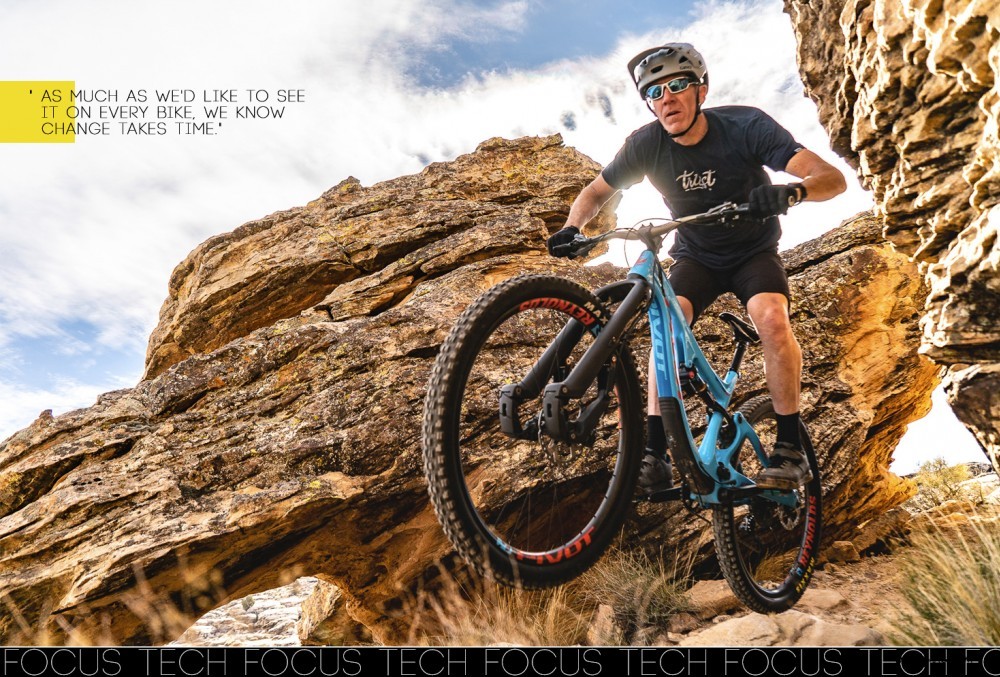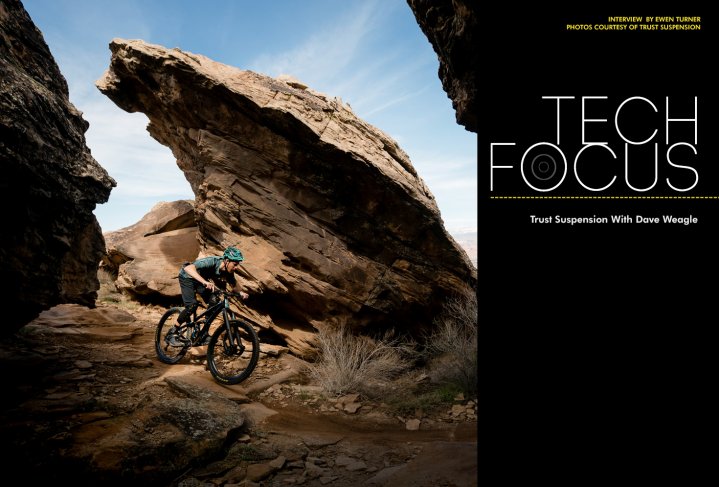
Tech Focus - Trust Suspension
Issue 62 / Wed 18th Dec, 2019
Linkage forks came and went some years ago, but Trust have pushed things to the next level with fresh ideas and a desire to create a better suspension experience for riders. We chat to Dave Weagle about forks and how Trust are shaping the future.
Who is Trust, and what do you do?
Trust Performance is a suspension design company based in Salt Lake City, Utah. We started the company in 2014 and have around 25 employees spread across our North American HQ in Salt Lake City, Utah and our Asia HQ and manufacturing centre in Taichung, Taiwan. Dave Weagle serves as Technical Director, Hap Seliga is our CEO, Matt Timmerman is the team's Damper Developer, Rob Aguero is Global Sales Manager, Ben Craner is our Marketing Director, and Joey Solomon is our Director of Asia operations.
What was the motivation to develop a linkage fork rather than a telescopic fork?
I've been designing, tuning, modifying and race engineering dampers springs and dampers for years. Sometime around 2008, I started to think about how linkage might be a way to address the inherent stability and stiction/stiffness issues inherent to telescopic forks. Years later, I developed some analysis, built some prototypes, instrumented them with sensors and started to appreciate the true potential of the design from a rider's perspective.
When I set out to build what would become the Message, I didn't know what to expect. All I knew is that I wasn't getting what I wanted out of my 120mm telescopic forks. When the prototype provided more stability, pedalling efficiency and maintained geometry in corners, I knew I had to move forward on it.
The motivation has always been and always will be to help riders make the most of their time on the bike—to provide something that truly makes the ride better and solves some of the biggest issues we face as we strive to do whatever it is that we each define as a good time. Maybe it's going faster, perhaps it's staying in control or just feeling more confident. Before we started trying to make better products, we rode the same stuff that you did, and sometimes to do something better, you have to try new things and take a risk. It doesn't always work out, but this time the risk was totally worth it.
What advantages does a linkage fork offer over a Telescopic one?
Traction. Stability. Control.
With regard to traction: When you're riding, and your front wheel hits an obstacle or a bump, what does the front wheel want to do? It wants to move in two directions: upward and backward. Telescopic forks are designed to only move upward, parallel with the steering axis (whatever backward movement you get is a result of the fork legs flexing backwards). When you add in the fact that you have internal stiction and bushing bind to overcome and it doesn't take long to realize that when you're riding a telescopic fork, your wheel doesn't move with the bump. Sure, it compresses, but there is a bunch of impact energy that doesn't follow the bump force, and so the impact energy has to go somewhere - often into the random pinging of your front tire.
Trust Performance suspension employs contour travel - not linear travel. This means that the axle and the front wheel moves upward and backwards when you encounter an obstacle or bump. Since our linkage assembly allows the suspension to move independent of the chassis, there's next to no stiction and binding. This means your front wheel tracks the shapes of bumps (both big and small) and keeps the wheel in contact with the ground for increased traction on a wider variety of trail conditions.
With regard to stability: it's all about offset and trail. We know that having less trail will make a bike feel nimble but less stable. Conversely, more trail makes a bike feel less nimble but more stable. The trend these days, driven by the increased capability of bikes and the fast/flowy style of modern trails, is toward more stability, which means more trail. To do that, bike makers increase trail in three ways: bigger wheel sizes, slacker head angles, and decreased fork offsets.
Creating shorter offsets pull the front axle back toward the bottom bracket, which gives the rider the sensation of quicker steering. However, the result of the steeper head angles ends up decreasing stability, especially at speed. The human body is quite capable of adapting and counteracting many geometry changes while riding. Although, every time you adjust your position on the bike, you're subconsciously redistributing your weight to preserve handling and overcoming the natural reduction head angle. Those shifts in geometry are most dramatic at the front of the bike. It's just something that's accepted as the new normal, but it doesn't have to be.
As you roll through a rough trail, the contact patch of your tire moves forward. Because telescopic forks have a fixed offset, in these conditions, you lose trail and are less stable. With Trust suspension, you gain trail and get more stable. Your front-end tracks to the intended line rather than getting pinged around or worse, turning sideways and pitching you over the bars. That's because our linkage design and back-and-up wheel path means we have dynamic offset. At the beginning of the stroke, Trust suspension increases offset, reducing trail. In the middle of the stroke, Trust suspension decreases offset, increasing trail. The result? A bike that feels quick and nimble between turns and in low-speed tech. And, you also get a bike that feels super stable while carving at speed.
Our trailing multi-link design creates an axle path that isn't forced to travel just in-line with the steering axis. Instead, the linkage design counteracts the natural steering angle change with a corresponding adjustment in offset, which means trail is maintained throughout the range of travel. So, imagine going into a turn with your bike unloaded. Our suspension allows your head angle to get a bit steeper, and when you're compressed into a corner, the head angle gets a bit slacker. It's the best of both worlds - excellent handling at low speed and high speed.
Combine increased traction from contour travel and next to no stiction, the increased stability from our dynamic offset and add in DH-fork stiffness from our carbon chassis and what you get is a suspension platform that provides riders with a greater sense of control on a wider variety of trail.
How do the Trust forks differ from other linkage forks we've seen in the past or on the market today?
There have been a number of linkage front suspensions, but most of these focused something we weren't after, which is braking performance and anti-dive. Our focus was to create a system that increased stability and suspension performance. When we took the step to design a linkage system that increased stability, it broke the Trust architecture off into its own genus of front suspensions.
What is inside the legs of the forks?
Looking down from the cockpit, the left leg houses the air spring. The right side houses our twin-tube thru-shaft damper.
Is maintenance and longevity as an issue with the moving parts, is servicing as easy as a telescopic fork?
Any moving part will experience wear depending on riding conditions, user neglect, etc. We realize a lot of folks might get nervous when they see the pivot bearings in the design, but here's the deal: we're confident enough to offer a lifetime warranty on pivot bearings to the original owner. General maintenance on Trust suspension is a lot simpler than what you get on a traditional telescopic fork. Since the stanchions are smaller, inverted and less exposed to the elements, you get around 250 hours riding before needing to service the damper assembly. When it comes time to service, we ask riders to send the chassis to an authorized service centre for a thorough inspection, full rebuild of oils and seals, nitrogen refill, etc. We make it a priority to ensure turn-around time is kept to an absolute minimum.
What are the current applications of your forks at the moment? What is the difference between the Message and Shout?
The Message is a 130mm contour travel design meant for trail riding. The Shout is a 178mm contour travel design meant for enduro riding. One thing to note is that Shout also has a totally different damper system in place—one that allows for 20% of the travel to remain plush, even in firm mode. We call it the sag-point firm mode. While using the firm mode on a climb, the front wheel contours the terrain until it reaches the sag point and the lockout mechanism engages. This results in a greater ability to absorb the bumps and increase traction while riding, but achieve that lockout feel when you get out of the saddle. It also means a lower ride height and a near 2-degree steeper seat angle than traditional locked out telescopics.
Your Shout has 178mm of travel yet it can replace a 160mm telescopic fork, how is this possible?
It's all to do with contour travel. Because the axle doesn't simply travel in line with the steering axis (like on a telescopic fork) traditional axle-to-crown measurements have less of an impact on how the bike handles. As a result of the contour wheel path, the feel of head angle change, axle-to-crown height and fixed offset are all lessened. This means Shout is capable of replacing a wider range of telescopic axle-to-crown heights. On 29" and 27.5+ bikes, Shout replaces 160-180mm telescopic forks; on 27.5" bikes Shout replaces 170-180mm telescopic forks.
Will it be possible to make a cheaper version in the future so more riders can benefit from linkage forks?
When we first launched, the retail cost of the fork was nearly $2700. With advances in product development and increased production, we were able to drop the price to $1975 in less than seven months, passing these savings right on to riders. Our focus has always been on making things better for the ride and the rider. We know we can do this by creating the best possible suspension and when we can pass along cost savings to riders.
What's the future of linkage forks?
The future is adoption! As much as we'd like to see it on every bike, we know change takes time. People are naturally sceptical of things that are different. Add to that the fact that we've had 80 plus years of telescopic forks dominating the landscape. We know how they feel and utilize them as a benchmark. But with all innovation, paradigm shifts happen and what's conventional becomes artefact. What's next for us? All we can say is that we're having a lot of good conversations with people in the industry and that we're also always working on cool stuff. We know we need to bring this technology to a larger market and we're making strides to do that via OEM partnerships. Stay tuned!
Videos
By Ewen Turner
Ewen Turner is a self-confessed bike geek from Kendal in the Lake District of England. He runs a coaching and guiding business up there and has a plethora of knowledge about bikes with an analytical approach to testing. His passion for bicycles is infectious, and he’s a ripper on the trails who prefers to fit his working life around his time on the bike.



